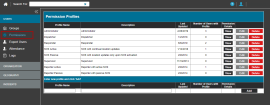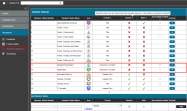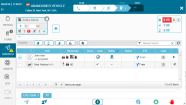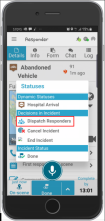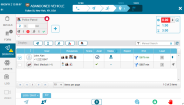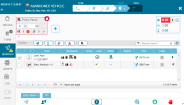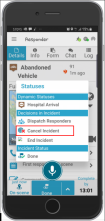Understanding Two-Step Dispatch
You can set up workflows in your organization that enable users with Supervisor permissions to dispatch additional resources, based on predefined conditions, to incidents directly from their mobile app instead of using the Dispatcher application.
To be able to do this, administrators must define the following:
- Supervisor permissions that include permission to allow the supervisor to make decisions in the incident.
-
Create triggers that will dispatch the resources comprising of:
-
Incident preconditions based on dynamic statuses (read more about dynamic statuses/reports). The dispatch rule is only triggered when a user (the dispatch operator via the Dispatcher application, or the supervisor directly from the Responder app) activates or reports this dynamic status (administrators can associate a dynamic status with any incident.)
-
Incident time triggers. The dispatch rule is only triggered after x minutes have passed since the Incident was created. (For more information on editing an incidents's SLA time, click here.)
-
After the occurrence of the first precondition (either the dynamic status or the timer rundown completes) the predefined resources are dispatched automatically.
Setting up Two-Step Dispatch
The procedures described in this section assume the scenario where a supervisor wants to dispatch resources for a specific incident type ( i,e. abandoned car) from their mobile app.
To enable two-step dispatch, you must first define the following preconditions:
- Make sure that the supervisor role has the required permissions to enable the supervisor to make decisions in the incident.
- Make sure there are dynamic statuses that can be triggered by the supervisor.
- Make sure the dynamic status is assigned to the incident type.
Supervisor Permissions
A supervisor must have permissions to make decisions in the incident.
To edit supervisor permissions:
-
From the Main screen, select Settings> USERS, and then select Permissions.
The Permissions screen opens.
- In the Supervisor row, click Edit > Edit, and scroll to the Supervisor profile.
-
Update the Supervisor profile, as required. The options are:
- Supervisor: Enables Supervisor permissions that include managing incidents via the mobile app.
- Allow Supervisor to make Decisions in Incident: Permits a supervisor to dispatch additional resources to an incident.
- Cancel Incident from Mobile: Permits a supervisor to cancel an Incident similar to a Dispatcher capability.
- Compose & send Messages from Mobile to supervised groups: Permits a supervisor to compose and send messages from the mobile app to supervised groups.
- Join incidents: Permits the supervisor to join incidents.
-
Click Confirm and then Save to apply your changes.
Dynamic Status
Read more about administrators Adding dynamic reports to an incident type.
To edit a dynamic status:
-
From the Main screen, select Settings> INCIDENTS, and then select Dynamic Statuses.
The Dynamic Statuses screen opens.
-
Confirm that the required dynamic status exists with the Decision in Incidents format.
-
If the dynamic status exists, but does not have the Decision in Incidents format, click edit from the Actions column and modify the format to Decision in Incidents.
-
If the required dynamic status does not exist go to the Add Dynamic Status area, and enter the details for the new dynamic status in the respective fields, and click Add.
Set Up Two-Step Dispatch Configuration
After confirming the supervisor permissions and creating the dynamic status, you must now apply the dynamic status to the incident type.
For more information see Managing Incident Types.
In our example we have chosen to dispatch all responders that are assigned to the geofence of an Abandoned car incident under the following conditions:
-
Precondition: The incident approval dynamic status was triggered by the supervisor; or
-
Timer: There has been no response to the Incident for three minutes.
Any situation that complies with one of these conditions triggers the dispatch of Resources.
If a Precondition is required, remember to add the Dynamic Status to the Incident configuration (under 'Add Dynamic Status' section).
Only one of the precondition or timer incident rule attributes are required in order to implement a two step dispatch.
After the incident is reported in the system the supervisor can trigger the dispatch of the resources when the dynamic status is updated.
The dispatch operator can view the two-step dispatch configuration in the Dispatch tab of the incident. A red border with a lock appears in the dispatch resources section for resources that have not yet been deployed to the Incident. A pop-up with the preconditions can be viewed by hovering your cursor over the red lock.
A dispatch operator can manually activate the dispatch rule by clicking on the pop-up which will bring up a confirmation dialog.
When the preconditions are met the red border changes to blue with an unlocked lock while the resources are automatically dispatched.
Cancel Incident from Mobile App
If a supervisor has the Cancel Incident from Mobile permission (see precondition permission section above), they can cancel the incident.

